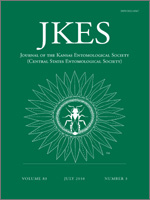Odonate larvae play an important role in wetland systems, providing food for many fish species and birds. Besides, they are important predators in these ecosystems. However, studies of factors that determine odonate species richness and distribution in wetlands are scarce in the Neotropical region. The objectives of this study were to: 1) conduct a survey of the diversity of odonate larvae in southern Brazil wetlands, and 2) determine how much variation in odonate richness, abundance and composition is explained by wetland area, altitude, water conductivity and nitrate, hydroperiod, and dominant aquatic vegetation in 140 wetlands in an extensive area of the Neotropical region (~280,000 km2, southern Brazil). A total of 4,039 individuals distributed among five families and 28 genera were collected. Libellulidae, Coenagrionidae and Aeshnidae were the families that showed the greatest richness. Erythrodiplax was observed in more than 70% of the sampled wetlands, and comprised 61% of individuals collected. Richness was negatively associated with wetland area and nitrate concentration. Odonate abundance was negatively associated with water conductivity and nitrate, and it was higher in aquatic beds than in emergent wetlands. Richness and abundance were higher in permanent than in intermittent wetlands. Variation in odonate composition was correlated with wetland altitude, area and water conductivity. Hydroperiod and dominant aquatic vegetation also influenced composition. Our results showed that southern Brazil wetlands are important habitats for 28 odonate genera, and that richness, abundance and composition are influenced mainly by hydroperiod, nitrate, and aquatic vegetation type. These results should be seen as important to determine the environmental factors that shape and maintain odonate diversity in southern Brazil wetlands.
How to translate text using browser tools
1 July 2010
Responses of Odonate Communities to Environmental Factors in Southern Brazil Wetlands
Leonardo Maltchik,
Cristina Stenert,
Carla Bender Kotzian,
Mateus Marques Pires
ACCESS THE FULL ARTICLE
Anisoptera
Biodiversidade
biodiversity
damselfly
dragonfly
larva de Odonata
Neotropical Region





